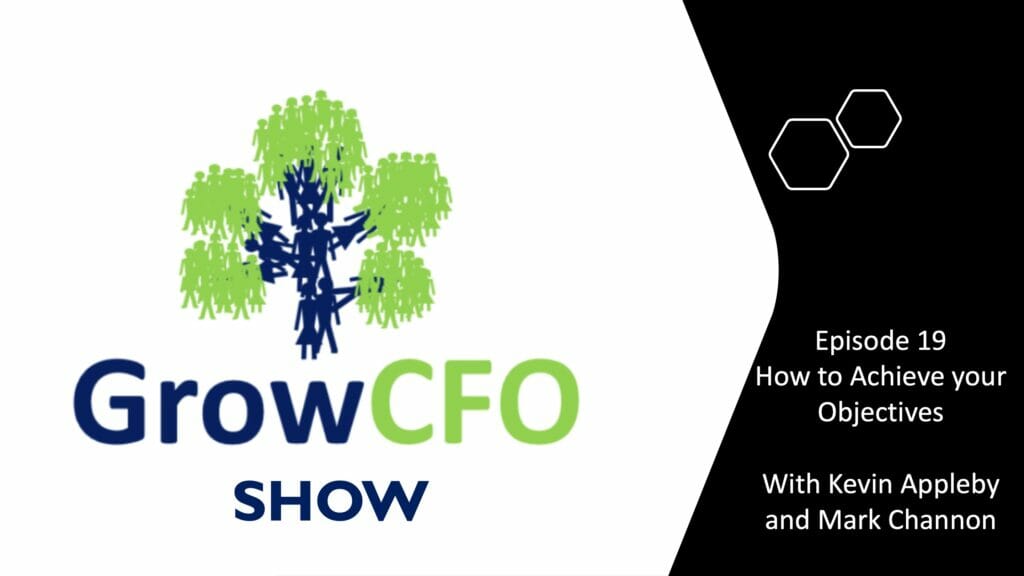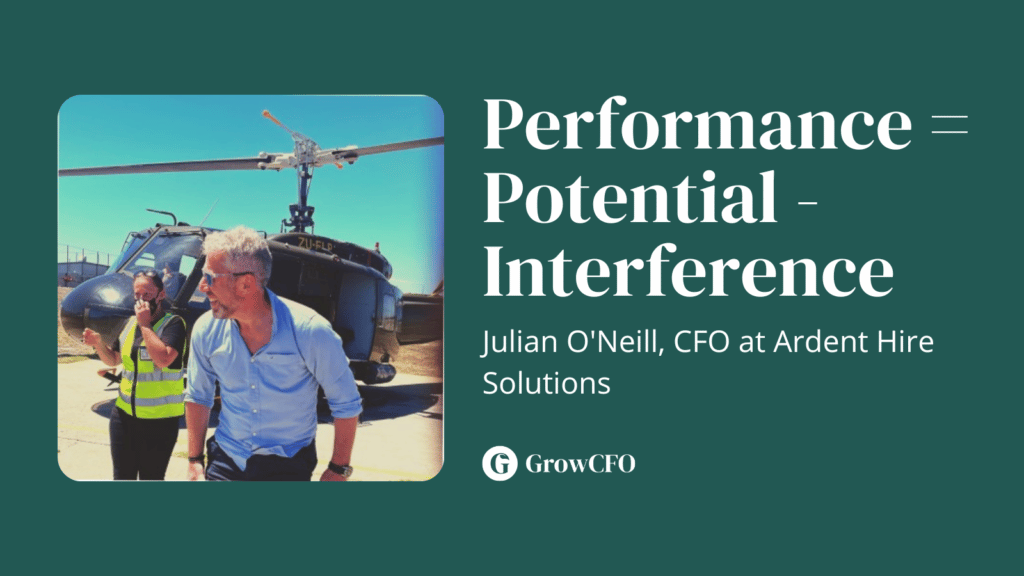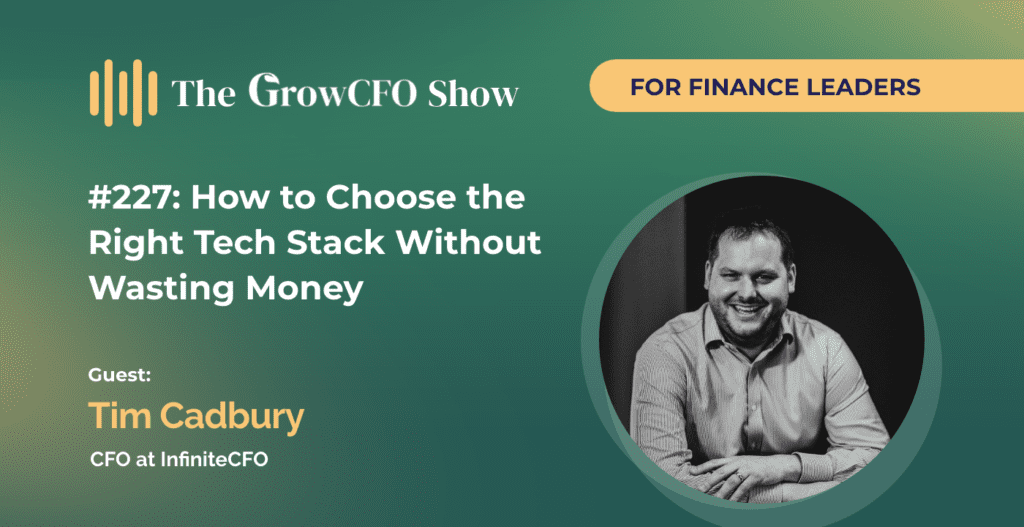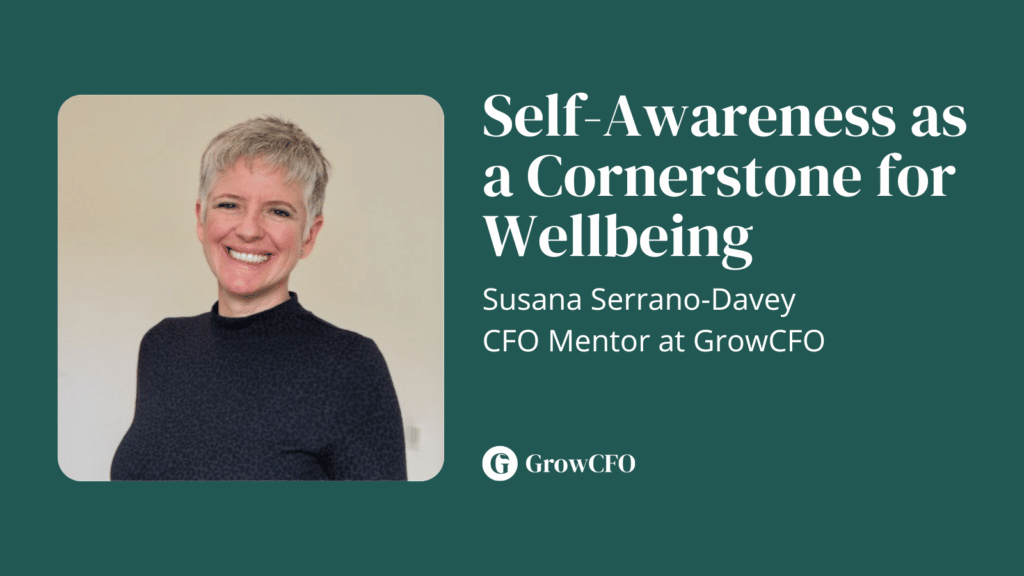#19 How to Achieve Your Objectives with Mark Channon

We’re all back at work after the festive break, refreshed and ready for whatever challenges 2021 will bring. Did you set yourself any new goals for 2021, or perhaps some new year resolutions? I caught up with Mark Channon for some help on turning those goals and resolutions into reality. Mark has some great advice to help you achieve your objectives.
About Mark Channon
Mark originally trained as an actor, before becoming one of the first 8 people in the world to become a Grand Master of Memory in the 1995 World Memory Championships. These days Mark works as a performance coach.
How does Mark plan his year?
Mark uses the 3-3-1 model. Three years, three months, one month. While he has a 3 year vision he never plans in detail for any more than three months at at time. He then breaks his objectives down into monthly goals. We focused on technique for goal setting in the last episode of the GrowCFO Show
Achieve your objectives with Tiny Habits
Mark is a huge advocate of tiny habits as a way to achieve your objectives. He has produced a free course inside GrowCFO that explains how to use the technique.
https://growcfo.mn.co/courses/2178470/content
B J Fogg devised the Tiny Habits method, and Mark has worked with B J for some time. Mark was originally fascinated by B J Fogg’s claim:
“Create new behaviours without the need for willpower or motivation”
Focus on tiny
In the Tiny Habits method you always start with a tiny behavior. Below are some examples:
- Floss one tooth
- Pour a cup of water
- Read one sentence in a book
- Put on walking shoes
- Take one deep breath
At the end of this page, I’ll explain how to translate a difficult habit (like 25 pushups each morning) into something tiny. But first, let me explain why tiny matters.
Why start tiny?
Difficult behaviors require a high level of motivation.
You’ve seen this in your own life. If there’s a tough task facing you, such as cleaning your entire home, you won’t do it unless your motivation level is high.
As human beings, our motivation level for any behavior goes up and down over time. That’s natural. And you can’t always rely on having a high level of motivation. Your motivation is often low for cleaning or exercising or cutting vegetables. That’s reality.
Relying heavily on motivation to create a habit does not work.
Tiny gives you success
When a behavior is really easy, like putting a magazine back on the shelf, you don’t need to throw a party to succeed. In other words, when a behavior is easy, you don’t need to rely on motivation. You simply put the magazine back on the shelf, and you are done.
This was BJ’s insight: “Okay, BJ. You already know how to floss all your teeth. That’s not the problem. You don’t yet know how to do this automatically.” So I scaled back flossing to just one tooth. I then focused on making this tiny behavior automatic in my life. Soon I created a solid habit, and then I grew the habit to include all of my teeth (hooray).
Simple is powerful
Simple is powerful. You’ll experience that next week.
You can grow your tiny behaviors in later weeks (for example, expand from flossing one tooth to all your teeth). But for this next week, to benefit your own success and learning, please, please keep it simple.
Just like with plants: You start small. It takes root. And then it can grow.
Simplicity changes behavior. The most important three words you’ll read today.
Achieve your objectives with Pomodoro
Mark uses Pomodoro as a way to develop a tiny habit into a much bigger behaviour. He’s currently writing a book, and uses the technique extensively to get work done
The Pomodoro Technique is a time management method developed by Francesco Cirillo in the late 1980s. You use a timer to break down your work into intervals. These are traditionally 25 minutes in length, separated by short breaks. Each interval is known as a pomodoro, from the Italian word for ‘tomato’, after the tomato-shaped kitchen timer that Cirillo used as a university student.
There are six steps in the original technique:
- You decide on the task to be done.
- Set the pomodoro timer (traditionally to 25 minutes)
- You work on the task.
- You end work when the timer rings and put a checkmark on a piece of paper.
- If you have fewer than four checkmarks, take a short break (3–5 minutes) and then return to step 2; otherwise continue to step 6.
- After four pomodoros, take a longer break (15–30 minutes), reset your checkmark count to zero, then go to step 1.
Why does Pomodoro work?
A goal of the technique is to reduce the impact of internal and external interruptions on focus and flow. A pomodoro is indivisible; when interrupted during a pomodoro, either the other activity must be recorded and postponed (using the inform – negotiate – schedule – call back strategy) or the pomodoro must be abandoned.
After you complete a task in a pomodoro, you can use any time remaining for activities such as:
- Review and edit the work just completed.
- Evaluate the activities from a learning point of view: What did I learn? What could I do better or differently?
- Review the list of upcoming tasks for the next planned Pomodoro time blocks, and start reflecting on or updating those tasks.
Cirillo suggests:
Specific cases should be handled with common sense: If you finish a task while the Pomodoro is still ticking, the following rule applies: If a Pomodoro begins, it has to ring. It’s a good idea to take advantage of the opportunity for overlearning, using the remaining portion of the Pomodoro to review or repeat what you’ve done, make small improvements, and note what you’ve learned until the Pomodoro rings.
The stages of planning, tracking, recording, processing and visualizing are fundamental to the technique. In the planning phase, tasks are prioritized by recording them in a “To Do Today” list. This enables users to estimate the effort tasks require. As pomodoros are completed, they are recorded, adding to a sense of accomplishment and providing raw data for subsequent self-observation and improvement.
Achieve your objectives by focussing on less
Simply having too many goals can stop you achieving what you want. We talked about Essentialisn by Greg McKeown in the last episode.
You can go an inch in a hundred directions or a hundred miles in one direction. The pursuit of less can be extremely powerful.
In Essentialism, Greg McKeown, CEO of a Leadership and Strategy agency in Silicon Valley who has run courses at Apple, Google and Facebook, shows you how to achieve what he calls the disciplined pursuit of less. Being an Essentialist is about a disciplined way of thinking. It means challenging the core assumption of ‘We can have it all’ and ‘I have to do everything’ and replacing it with the pursuit of ‘the right thing, in the right way, at the right time’.
By applying a more selective criteria for what is essential, the pursuit of less allows us to regain control of our own choices so we can channel our time, energy and effort into making the highest possible contribution toward the goals and activities that matter.
You can use this technique to claim back your own time. Think about all those meetings you are invited to as the CFO or head of finance. Are they part of your agenda or somebody else’s? Do you really need to be there.
Look at your approach to email as well. Responding to other people’s requests can easily divert you from your own priorities. Can you choose when you respond? Maybe there’s sense in looking at email later in the day and doing your own deep work first.
Achieve your objectives with 5 Minute Journal
You can achieve more with less. 5 Minute Journal will help you seamlessly create positive habits without investing years in experimenting and research to achieve the same results. Its a straightforward app available for your phone that allows you to focus your mind on your purpose. Its a great tool to add to your morning and evening routine.
The Five Minute Journal App asks you three morning questions designed to instill gratitude, set purpose for your day, and create empowering beliefs. When you start your morning off on the right foot, days seem to go by smoother.
At the end of the day, two night questions ask you to reflect on the amazing things that happened throughout your day and how you could improve for tomorrow. Sleep easier ending your day on a high note.
Podcast: Play in new window | Download







Responses